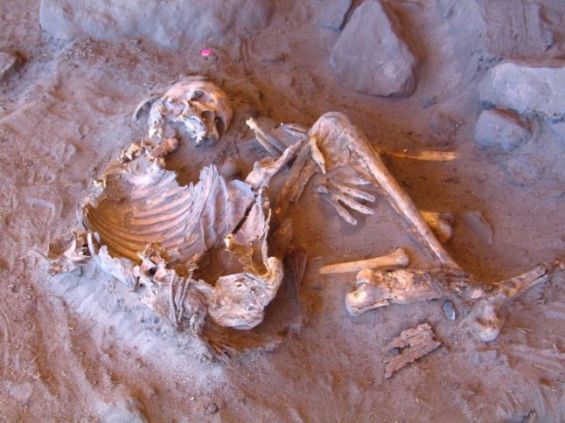The ancient genomes from the African Humid Period, linked to the «Green Sahara», offer groundbreaking insights into North Africa’s past, with findings intersecting those from Taforalt (Morocco) and Takarkori (Libya). Takarkori, in particular, sheds light on a lineage associated with the Iberomaurusian lithic industry, which is closely connected to discoveries in Morocco. A study published on April 2 in the scientific journal Nature describes these results as «an important first step» for «future genetic studies», which could offer more precise insights into human migrations and gene flow across the Sahara.
Conducted by researchers from Libya, Morocco, South Africa, and several European countries, the study is based on ancient genomic data from two Neolithic pastoral women buried in the rock shelter of Takarkori in the central Sahara. The majority of their ancestry comes from a previously unknown North African genetic lineage that diverged from Sub-Saharan African lineages around the same time modern humans left Africa and remained isolated for much of its existence, the authors explain.
 Chronology of ecozones and subsistence strategies in the broader Sahara region
Chronology of ecozones and subsistence strategies in the broader Sahara region
Takarkori and Taforalt
The study also highlights the connection between the Takarkori individuals and the 15,000-year-old hunter-gatherers from Taforalt cave. While the Taforalt individuals exhibit half the Neanderthal admixture of non-Africans, the Takarkori genomes show significantly less Neanderthal ancestry—ten times less than Levantine farmers—but notably more than contemporary Sub-Saharan genomes.
The researchers suggest that pastoralism spread through cultural diffusion in a deeply divergent and isolated North African lineage, likely widespread in North Africa at the end of the Pleistocene. These findings also support earlier studies, which suggest that ancient North African Neolithic genomes are derived from a Maghrebian genetic pool, linked to much older individuals from the late Stone Age site of Taforalt.
Following the sequencing of a genome in Morocco, evidence from sites in Algeria and Tunisia has led to further questions about the movements between Asia, Europe, and the Maghreb during the development of local production cultures.





 chargement...
chargement...













